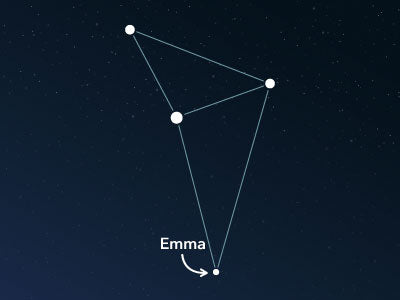The constellation Norma
Características
- Nombre latino
- Norma
- Hemisferio
- Hemisferio sur
- Visibilidad
- April - July
- Área
- 165 deg²
- Estrella más brillante
- γ² Normae (HIP number 80000)
- Especialidades
- Open star clusters, globular cluster, gas nebula

The Norma represents a carpenter's square or level and is a small and inconspicuous constellation in the southern celestial sky. It was introduced in the mid-18th century by the French astronomer Nicolas Louis de Lacaille. Within its area are several interesting deep-sky objects.
Hemisphere, visibility, and area
The constellation Norma lies in the south and can be observed from the entire southern hemisphere. North of the equator, it can only be seen up to the 30th parallel. This corresponds to regions such as Orlando in the United States or Lanzarote on the west coast of Africa.
The months of April to July offer the best view of the constellation, which appears with an area of approximately 165 square degrees in the night sky. With this size, it ranks 74th among all the other 88 constellations.
Due to the faint stars, Norma is very inconspicuous and challenging to find in the night sky. The brightest star has only an apparent magnitude of roughly 4.01. It is named γ² Normae (Gamma ² Normae) and is located about 129 light-years from earth.
To discover Norma in the night sky, it is helpful to orient oneself to the surrounding constellations. To the north lies the striking Scorpius, and to the northeast is Lupus. Additionally, to the east is the small Circinus, and to the south and west are the Triangulum Australe and the Ara.
Specialties in the constellation
The Milky Way can be found in the Norma constellation, which contributes to several nebulous objects. These include many open star clusters, as well as a globular cluster and a gas nebula.
The brightest open star cluster is NGC 6087, with an apparent magnitude of about 5.4. It contains around 40 stars and is located approximately 3,500 light-years away. It can already be perceived as a hazy spot with the naked eye.
History
After the invention of the telescope, the French astronomer Nicolas Louis de Lacaille defined several constellations of the southern sky that had not been recognized before or were too complex in his eyes. Therefore, he measured the positions of more than 10,000 stars from the Cape of Good Hope near Cape Town in South Africa.
Unlike the 48 constellations of ancient times that usually bear the names of mythological figures, he frequently used names of technological innovations for the new constellations. Norma, which de Lacaille introduced under the name "Norma et Regula," represents a set square, carpenter's square, or a level, which sailors used to determine their position.
In 1930, some stars were re-assigned to Scorpius by the International Astronomical Union (IAU), so there are no stars labeled α (Alpha) and β (Beta) in Norma.
PublicadoLeer más artículos interesantes

An overview of all 88 constellations
Learn more about all 88 constellations and read interesting information about the mythology, visibility, and features.

Planetario App
¡Descubre el cielo nocturno con nuestra aplicación de planetario!
Disponible para iOS y Android.

Nombrar una estrella en la constelación Carpenter’s Square, Level
Name a star in a constellation and create something that lasts for eternity.